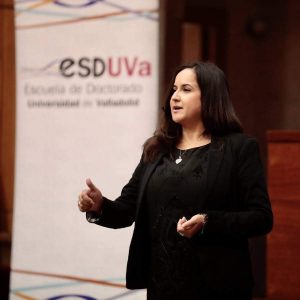Automatic analysis of overnight airflow to help in the diagnosis of pediatric obstructive sleep apnea
| PhD in Information Technology and Telecommunications |
| Doctor: Verónica Barroso García |
| Date of reading: 20/06/2022 |
| Directors: Roberto Hornero Sánchez , Gonzalo C. Gutiérrez Tobal |
Court:
|
Introduction

Pediatric obstructive sleep apnea (OSA) is a highly prevalent and underdiagnosed breathing disease that can adversely affect the physiological and cognitive functions of children, causing serious long-term neurocognitive deficiencies, behavioral disorders, cardiometabolic malfunctioning, and endocrine dysfunctions. Consequently, it is of the utmost importance that they are timely diagnosed and treated to prevent these negative consequences.
Objectives
The gold standard test for OSA diagnosis is the hospital overnight polysomnography (PSG). It is highly effective, but also uncomfortable to children, expensive, complex, intensively laborious, and often unavailable, which lead to long waiting lists and diagnostic delays. Thus, great efforts have been made to search and develop simpler diagnostic methods as alternative to PSG. One of these alternatives is the automatic analysis of readily acquirable cardiorespiratory signals.
Development
In this context, the Doctoral Thesis focuses on designing, implementing, and assessing novel automatic signal processing methods that allow comprehensively characterizing the overnight airflow (AF) from children and helping in the pediatric OSA diagnosis. Particularly, non-linear, spectral, bispectral, recurrence plot, and wavelet analyses are proposed for adapting to the intrinsic properties of overnight AF and getting useful OSA-related information from it. In view of the results, we can conclude that the characterization of overnight AF by means of these novel methods can help to simplify the OSA diagnosis in children. In addition, the high performance of the proposed models suggests that they could be incorporated into clinical practice as reliable automatic screening methods for pediatric OSA.

Ending
This Doctoral Thesis was awarded with a “Cum Laude” distinction by unanimity, as well as with the International Mention after a three-month internship at the Sleep Technology and Analytics Research Group, at the University of Eastern Finland (Kuopio, Finland).
In addition, it has been awarded with the Extraordinary PhD Award from the University of Valladolid.